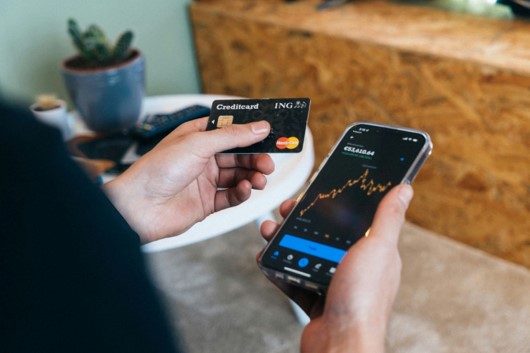Check fraud is a growing threat within the financial industry and raises serious challenges for both people and businesses. Projected to reach a huge $24 million by 2024, the number and complexity of these frauds are increasing as fraudsters continually refine their methods to evade detection and maximize their illicit profits.
Given the large sums of money involved, it’s not surprising that in the United States, engaging in check fraud is typically classified as a felony. This legal classification, often simply referred to as ‘check fraud’, highlights the serious consequences for those convicted, including high fines and potential prison sentences.
In this post, we’ll explore check fraud, including what it is, how it works, and tips on spotting and avoiding it. This information will offer essential strategies to effectively protect your finances and avoid becoming a victim of this fraud.
What is Check Fraud?
Check fraud is a form of financial crime that involves the illegal use of checks to fraudulently obtain or misappropriate funds. It can occur in various ways but fundamentally centers around the fraudulent alteration or creation of checks.
Which Types of Check Fraud Should you be Aware of?
Check fraud is a growing threat in the financial world, exploiting various vulnerabilities inherent to checks. Here are some common types of check fraud that consumers and businesses should be aware of:
- Check theft and forgery: this consists of several illicit practices related to the illegal use and modification of checks. It includes the creation of entirely fake checks that look like legitimate ones, often referred to as check falsifying. Made alterations to existing checks, such as changes to the payee’s name or the dollar amount.
These modifications frequently involve the use of special chemicals that erase the original details on the check, enabling fraudsters to rewrite the information, a technique known as check washing.
- Stolen check fraud: this type of fraud occurs when a thief steals a check and alters critical details like the payee’s name or the amount, and then proceeds to cash or deposit it. This frequently includes changing the dollar amount to a higher value before cashing.
- Check kiting and paperhanging: this involves writing a check from an account that lacks sufficient funds, with the perpetrator quickly depositing funds to cover the check before it is processed.
- Post-dated check fraud: in this scheme, checks are intentionally dated for the future to create a misleading appearance of validity. This can be used to commit fraud by providing checks that appear valid at a later time but are initially not backed by sufficient funds.
Is check fraud a felony?
In the United States, check fraud is a serious offense and is also typically classified as a felony. This classification reflects the severe nature of the crime and its potential to cause severe financial damage. Those who are convicted of check fraud can face harsh penalties, including fines and prison terms, specifically check forgery jail time.
The exact consequences depend on the amount of money involved, specifically whether it exceeds the check fraud felony amount and the specifics of the fraud committed. This felony designation supports the legal system’s strict approach to combating this type of financial crime
How does Check Fraud work?
Here’s an in-depth look at how check fraud employs a variety of deceptive methods to illicitly obtain funds:
- Stolen checks: criminals often steal checks from mailboxes, offices, or even directly from individuals. They might change the payee’s name and increase the dollar amount to channel funds into different accounts illegally. This method also includes using the account holder’s signature to authorize fraudulent transactions.
- Identity theft: this type of fraud extends beyond just stealing checks. It involves the unauthorized use of someone’s personal information to create or alter checks. By assuming another person’s identity, fraudsters can issue checks in their name, further complicating the traceability and increasing the scope of the fraud.
- Sophisticated forgeries: advances in technology have made it easier for criminals to replicate checks with a high degree of accuracy, including the security features that are supposed to protect against fraud.
How to Spot a Check Fraud
Identifying check fraud involves vigilance and a keen eye for discrepancies that may indicate a check is not legitimate. The Federal Deposit Insurance Corporation (FDIC) provides several guidelines to help spot fraudulent checks.
Here’s what to look out for and how to verify a check’s legitimacy:
- Verify the bank’s legitimacy: always verify that the check is drawn from a legitimate bank. Sometimes, forgery checks might feature the name of a real bank, but upon closer inspection, some details might not add up. Confirm with the bank directly, using contact information from their official website.
- Discrepancies in bank details: look for any inconsistencies in the bank’s name, address, or logo. Fraudulent checks may have slight variations from the bank’s official branding or use outdated logos.
- Poor grammar and communication: often, communication related to a fraudulent check contains poor grammar or spelling errors. This is especially common in fraud schemes originating from non-English speaking countries.
- Mismatched postmarks and bank locations: if the check was mailed, compare the postmark location to the bank’s location. A postmark that doesn’t match the city or state of the issuing bank can be a red flag.
- Examine watermarks and security features: legitimate checks have specific watermarks and security features designed to prevent fraud. Hold the check-up to the light to see if it includes a watermark, and compare it to the known security features of the issuing bank.
- Unusual check numbers and amounts: if the check number is out of sequence compared to previous checks from the same issuer, or if the amount is unusually high, these can be indicators of fraud. Also, be cautious of checks that are written for more than the agreed amount, as this is a common tactic in scams.
How to avoid a Fake Check Scam
Avoiding fake check scams requires paying attention to several best practices in handling and processing checks. By implementing careful strategies and educating yourself and your team, you can reduce the risk of falling victim to this prevalent form of fraud.
Here are some key aspects to consider:
1-Wait for checks to clear
One of the most fundamental precautions is to wait for a check to be fully cleared before using the funds or providing products and services. The clearing process can take various days, and just because funds appear available in your account doesn’t mean the check is legitimate.
2-Verify with the issuing bank
Always verify a check’s authenticity by contacting the issuing bank directly. Use contact information from the bank’s official website rather than any details printed on the check itself, which could be falsified. Ask the bank to confirm if the account number and check number are valid and if the check has the correct amount and payee name.
3-Beware of overpayment scams
Be cautious of any transactions where the check amount exceeds what was agreed upon. Scammers often send checks for higher amounts and request the extra money to be returned to them or a third party. Always treat these overpayments as suspicious, because legitimate businesses do not typically operate in this manner.
4-Educate your staff and set policies
Make sure your team is well-informed about the signs of check fraud and the procedures for handling checks. Establish clear policies for accepting checks that include verification steps and guidelines on how to respond to suspicious activity. Regular training sessions can help maintain interest and ensure consistency in how your team handles transactions.
Stay Vigilant against Check Fraud Scam
Recognizing that checks are susceptible to numerous vulnerabilities, which fraudsters actively attempt to exploit, is key. By understanding these vulnerabilities, you can improve your defenses against theft. As fraudsters continuously develop new scam tactics, ongoing education, and verification processes become crucial.
Understanding what makes check fraud a felony of severe consequences, emphasizes the need for caution in every transaction. Staying vigilant against check fraud is essential in guarding your personal and financial information.
We Want to Hear From You!
The fight against cryptocurrency scams is a community effort at Crypto Scam Defense Network, and your insights are invaluable. Have you encountered a scam, or do you have questions about navigating the complex world of digital currency? Maybe you have suggestions or want to share your story to help others. Whatever your experience, we’re here to listen and support you.
Reach out to us at hello@cryptoscamdefensenetwork.com. Share your stories, ask questions, or make comments. Your voice is crucial to building a resilient and informed community. Together, we can improve our defenses and promote a safer digital space for all.
Be a part of the change. Your story matters.
Photos via Unsplash and Pexels







